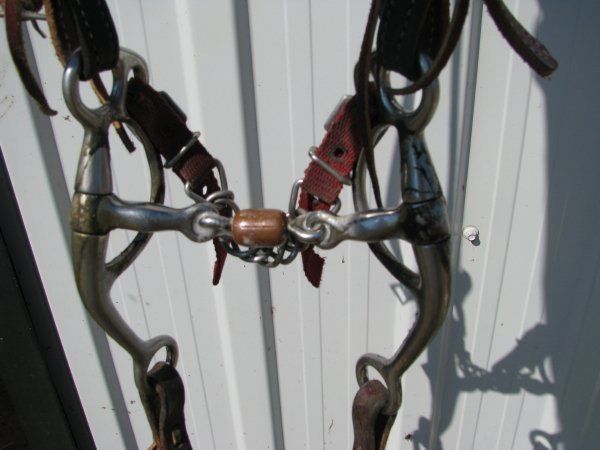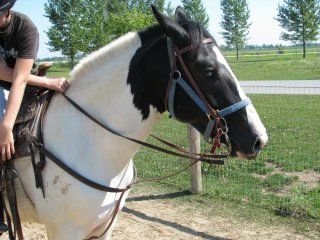- Thread starter
- #11
Ok, so I'm totally confused. this bit is a three piece. It has a copper spinner to give him something to mouth in the middle, and I was also told the three pieces made it clearer for him to understand the left rein, right rein etc. It is a thick bit, so it does not seem uncomfortable to him. She said it was a "kind" bit.
He responds exceptionally well, as we have ridden him for about three hours today and about an hour yesterday when he came home. He is a totally different horse than the one who left here a month ago. We couldn''t even walk him on a lead rope before he left. He broke three halters in his first week of training.
She was the kind of trainer who let us come and visit and watch whenever we wanted, so I am not concerned about her training techniques.
I was fine with the bit, having used it on our 8 yo QH, but started looking online to purchase one( since it was borrowed). thats when I read mixed reviews about it. Is iut not a akind bit?
I will take pics tomorrow when we saddle him up again.
I am "new " to horses (las two years), so am still very green myself. So I need to learn. I am surprised at the reaction over this bit. She told me it was a pelham training bit, so I could buy one for ourselves.
I obviously will use this bit as it is what he is used to, but if it is better for me to use a different one, I will switch at an appropriate time.
Like I said, I will post pics of this bit tomorrow.
Thanks
He responds exceptionally well, as we have ridden him for about three hours today and about an hour yesterday when he came home. He is a totally different horse than the one who left here a month ago. We couldn''t even walk him on a lead rope before he left. He broke three halters in his first week of training.
She was the kind of trainer who let us come and visit and watch whenever we wanted, so I am not concerned about her training techniques.
I was fine with the bit, having used it on our 8 yo QH, but started looking online to purchase one( since it was borrowed). thats when I read mixed reviews about it. Is iut not a akind bit?
I will take pics tomorrow when we saddle him up again.
I am "new " to horses (las two years), so am still very green myself. So I need to learn. I am surprised at the reaction over this bit. She told me it was a pelham training bit, so I could buy one for ourselves.
I obviously will use this bit as it is what he is used to, but if it is better for me to use a different one, I will switch at an appropriate time.
Like I said, I will post pics of this bit tomorrow.
Thanks







